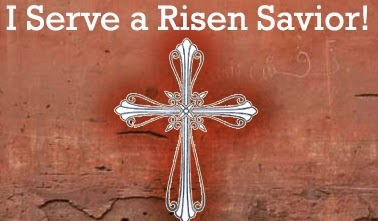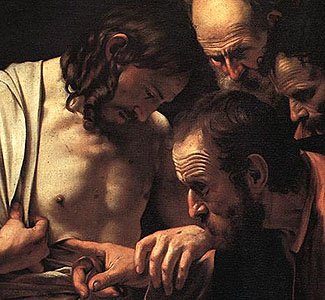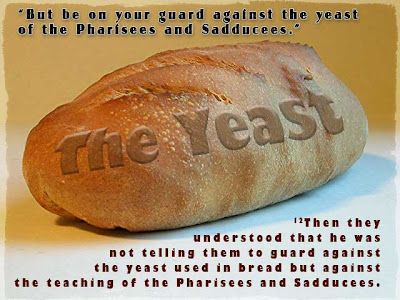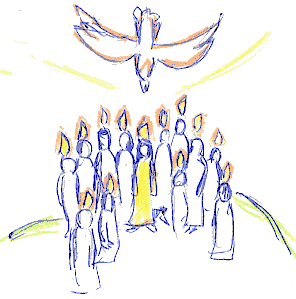
Bloor Lansdowne Christian Fellowship – BLCF Church Message for Sunday:
The Parables and the Miracles of the Ministry of Jesus Christ
© March 3, 2024, by Steve Mickelson
Based on Messages shared at BLCF on April 30, 2023, May 19, 2019, October 15, 2017,
and September 22, 2013
BLCF Bulletin October 15, 2017
BLCF Bulletin September 22, 2013 a
Announcements & Call to Worship; Prayer
Tithing and Prayers; Hymn #572: Praise God from Whom All Blessings; Prayer Requests
Doxology (Praise God From Whom All Blessings Flow) – Instrumental – https://youtu.be/Mk4p3rihONU
Music Special: Church (Take Me Back) Cochren & Co. Worship Video with lyrics. https://youtu.be/ns8lIG6cLc8
Music Special: Lauren Daigle | Light Of The World (Lyric Video) – https://youtu.be/d0HViI_TrIM
Responsive Reading 664: About Spiritual Gifts (1Corinthians 12); Prayer
by Steve Mickelson: The Miracles and Parables of Jesus
Let us pray…
Welcome to Bloor Lansdowne Christian Fellowship – BLCF Church for our Sunday Morning Praise and Worship Service, for the first Sunday of March 2024, which makes today a Communion Sunday here at BLCF. Communion will partake in Communion towards the end of the service.
By the way, though I stopped posting the COVID-19 Positivity Rates for Canada last fall, where the upward trend was not heading to the ideal rate of %% for at least two consecutive weeks was the number that epidemiologists want before declaring a pandemic to officially have ended. Last August, 2023, we were close ay 6.8 % Positivity, but the rate kept trending up. I am happy to report that the trend is good again though still high at 8.1 % Positivity on the 7 days ending February 27, 2024. We still seem to have a ways to go.
COVID-19 Current Trends in Canada (Positivity above 5% is considered high)
Weekly Percent Positivity:
8.1 % Positivity – 58 Deaths (February 27, 2024, 9 am ET)
17.8 % Positivity – 158 Deaths (October 31, 2023, 8 am ET)
17.5 % Positivity – 155 Deaths (October 24, 2023, 9 am ET)
19.8 % Positivity – 126 Deaths (October 17, 2023, 9 am ET)
19.6 % Positivity – 110 Deaths (October 11, 2023, 10 am ET)
15.1 % Positivity – 48 Deaths (September 12, 2023, 9 a.m. ET)
11.6 % Positivity – 30 Deaths (August 29, 2023, 10 a.m. ET)
6.8 % Positivity – 19 Deaths (August 1, 2023)
https://health-infobase.canada.ca/covid-19/#a2

Our lesson today is entitled: The Miracles and Parables of Jesus.
The disciples recorded that throughout his ministry the Lord frequently performed miracles and made use of the parable. In our lesson today we will examine why Jesus used the miracle and the parable. While a miracle is doing something that is beyond the laws of nature, a parable is a metaphor used to teach a spiritual lesson.
An example of a metaphor would be: suppose I ask sisters Naomi and Monica to come forward and stand by the pillar to my right. If I refer to my two sisters in Christ as being “pillars of the Church” – we know that I do not mean that they are the same as the alabaster pillar beside them which is holding up the roof, which the literal meaning of the description. The expression is a metaphorical statement that these ladies are key members of our congregation, which is part of the greater bodies of believers who are Christ’s Church.
But for today’s lesson, let us begin by looking first at the miracles that Jesus performed. The Bible records over forty miracles attributed to Jesus, during his ministry:
The Miracles of Jesus
- Miracles of Jesus: Born of a virgin (Matthew 1:18-25, Luke 1:26-38)
- Miracles of Jesus: Changing water into wine (John 2:1-11)
- Healing of the royal official’s son (John 4:46-54)
- Healing of a man possessed by a demon in Capernaum (Mark 1:21-28, Luke 4:33-37)
- Healing of Simon Peter’s mother-in-law (Matthew 8:14-15, Mark 1:29-31, Luke 4:38-39)
- Healing the sick during the evening (Matt 8:16, Mark 1:32, Luke 4:40)
- Catching a large number of fish (Luke 5:3-10)
- Healing a leper (Matthew 8:1-4; Mark 1:40-45; Luke 5:12-15)
- Healing a centurion’s servant (Matthew 8:5-13, Luke 7:1-10)
- Healing a paralyzed man (Matthew 9:1-8, Mark 2:1-12, Luke 5:18-26)
- Healing a withered hand (Matthew 12:9-14, Mark 3:1-6, Luke 6:6-10)
- Raising a widow’s son (Luke 7:11-17)
- Calming the stormy sea (Matthew 8:23-27, Mark 4:35-41, Luke 8:22-25)
- Healing the Gerasene demon-possessed man (Matthew 8:28-32, Mark 5:1-13, Luke 8:26-33)
- Healing a woman with internal bleeding (Matthew 9:20-22, Mark 5:25-34, Luke 8:43-48)
- Raising Jairus’ daughter (Matthew 9:18-19, 23-25; Mark 5:22-24, 35-43; Luke 8:41-42, 49-56)
- Healing two blind men (Matthew 9:27-31)
- Healing a mute man possessed by a demon (Matthew 9:32-33)
- Healing a man who was crippled for 38 years (John 5:1-17)
- Feeding 5000 men and their families (Matthew 14:16-21, Mark 6:35-44, Luke 9:12-17, John 6:5-14)
- Jesus walks on water (Matthew 14:22-33, Mark 6:45-52, John 6:16-21)
- Healing of many in Gennesaret (Matthew 14:34-36; Mark 6:53-56)
- Healing a demon-possessed girl (Matthew 15:21-28, Mark 7:24-30)
- Healing a deaf man with a speech impediment (Mark 7:31-37)
- Feeding the 4000 men and their families (Matthew 15:29-39, Mark 8:1-10)
- Healing a blind man in Bethsaida (Mark 8:22-26)
- Healing a man born blind (John 9:1-41)
- Healing a boy possessed by a demon (Matthew 17:14-20, Mark 9:17-29, Luke 9:37-43)
- Catching a fish with a coin in its mouth (Matthew 17:24-27)
- Healing a blind and mute man who was possessed by a demon (Matthew 12:22-23, Luke 11:14)
- Healing a woman with an 18 year infirmity (Luke 13:10-13)
- Healing a man with dropsy (Luke 14:1-6)
- Healing 10 men suffering from leprosy (Luke 17:11-19)
- Bringing Lazarus back to life (John 11:1-44)
- Healing Bartimaeus of blindness (Matthew 20:29-34, Mark 10:46-52, Luke 18:35-43)
- The withering fig tree that produced no fruit (Matthew 21:18-22; Mark 11:12-14, 20-25)
- Restoring a severed ear (Luke 22:45-54)
- The resurrection of Jesus Christ ( 1 Corinthians 15, Matthew 28, Mark 16, Luke 24, John 20 )
- Catching of the 153 fish (John 21:4-11)
- The ascension of Jesus Christ ( Acts 1:1-11 )

Evangelist Rev. G. Campbell Morgan concerning Parables and Miracles said: “Every parable that Jesus taught was a miracle of instruction and every miracle that Jesus wrought was a parable of instruction.”
Scholars have attributed a wide assortment of often conflicting reasons for these miracles. These reasons range from the miracle being just an illustrative talking point in the teachings of Jesus to the miracle itself being dismissed as a parable of something more mundane.
It seems that many of these authors seem to have neglected one of the most compelling and authoritative sources in researching their writings on the miracles of Christ, the Bible.
Let us see what the Scriptures say about the subject. I would like to direct you to the account of the disciple Thomas, who was absent from the Upper Room when, Jesus first appeared to the other disciples as the Resurrected Christ, John 20:24-31 (ESV):
Jesus and Thomas

24 Now Thomas, one of the twelve, called the Twin,[a] was not with them when Jesus came. 25 So the other disciples told him, “We have seen the Lord.” But he said to them, “Unless I see in his hands the mark of the nails, and place my finger into the mark of the nails, and place my hand into his side, I will never believe.”
26 Eight days later, his disciples were inside again, and Thomas was with them. Although the doors were locked, Jesus came and stood among them and said, “Peace be with you.” 27 Then he said to Thomas, “Put your finger here, and see my hands; and put out your hand, and place it in my side. Do not disbelieve, but believe.” 28 Thomas answered him, “My Lord and my God!” 29 Jesus said to him, “Have you believed because you have seen me? Blessed are those who have not seen and yet have believed.”
The Purpose of This Book

30 Now Jesus did many other signs in the presence of the disciples, which are not written in this book; 31 but these are written so that you may believe that Jesus is the Christ, the Son of God, and that by believing you may have life in his name.
Footnotes: a. John 20:24 Greek Didymus
We see that when the Lord returns to the Upper Room, eight days after his first appearance Thomas would believe in the miracle of the resurrection.
However, it is the next two verses of John’s Gospel that signify the intent of purpose to the inclusion of the signs of miracles of Jesus in his gospel, as well as the other inspired Scriptures of the New Testament:
The Purpose of This Book

30 Now Jesus did many other signs in the presence of the disciples, which are not written in this book; 31 but these are written so that you may believe that Jesus is the Christ, the Son of God, and that by believing you may have life in his name.
John acknowledges that there were many other signs or miracles not included in his gospel, but those that he did include, we do so that we may believe that Jesus is the Christ, the Son of God, and by believing this, we too may have life in his name.
In the times of Jesus and the disciples, the Scriptures give us many accounts of false prophets of God, who used so-called magic sleight of hand to either challenge His authority or demonstrate that they have been called disciples of God. Both are false.
God performed miracles to change the heart of Pharaoh so that the ruler would release His people from their captivity, as we read in Exodus 7:8-12 (ESV):

8 Then the Lord said to Moses and Aaron, 9 “When Pharaoh says to you, ‘Prove yourselves by working a miracle,’ then you shall say to Aaron, ‘Take your staff and cast it down before Pharaoh, that it may become a serpent.’” 10 So Moses and Aaron went to Pharaoh and did just as the Lord commanded. Aaron cast down his staff before Pharaoh and his servants, and it became a serpent. 11 Then Pharaoh summoned the wise men and the sorcerers, and they, the magicians of Egypt, also did the same by their secret arts. 12 For each man cast down his staff, and they became serpents. But Aaron’s staff swallowed up their staffs.
We also have in Acts 8:9-24, the account of Simon the Magician, who failed when he sought to purchase the power of the Holy Spirit from the disciples as we read specifically in verses 18-22:
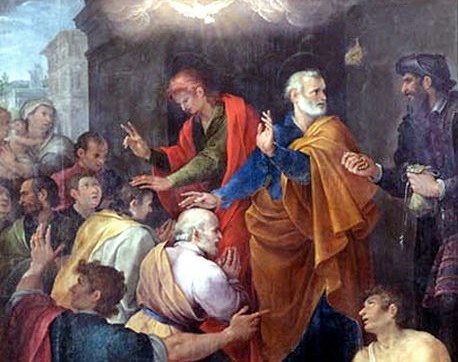
18 Now when Simon saw that the Spirit was given through the laying on of the apostles’ hands, he offered them money, 19 saying, “Give me this power also, so that anyone on whom I lay my hands may receive the Holy Spirit.” 20 But Peter said to him, “May your silver perish with you, because you thought you could obtain the gift of God with money! 21 You have neither part nor lot in this matter, for your heart is not right before God. 22 Repent, therefore, of this wickedness of yours, and pray to the Lord that, if possible, the intent of your heart may be forgiven you.
Simon the Magician did not have an understanding receiving the power of God’s Holy Spirit is the reward for faith in Him, that God’s Holy Spirit cannot be purchased nor subject to commands of any person, and most importantly the Spirit is intended to facilitate God’s plan for humanity, not vice-versa.
Today, we see many false prophets who desire to elevate themselves not to praise God. Like Simon the Magician, they may have been baptized, they know all the right phrases used by believers, and they seek only to elevate themselves above God and above others. It is the sin of the Garden of Eden all over again.
God used miracles to change the heart of Pharaoh and Simon the Magician could not receive the power of the Holy Spirit because his heart was not right with the Lord when he sought to buy the Spirit from the disciples.
But like Pharaoh and Simon the Magician, people whose hearts are not right with God still seek a miracle, not out of their own faith, but from a twisted desire to prove their own authority over the one true God, as we see in Matthew 16:1-12 (ESV):
The Pharisees and Sadducees Demand Signs

16 And the Pharisees and Sadducees came, and to test him they asked him to show them a sign from heaven. 2 He answered them,[a] “When it is evening, you say, ‘It will be fair weather, for the sky is red.’ 3 And in the morning, ‘It will be stormy today, for the sky is red and threatening.’ You know how to interpret the appearance of the sky, but you cannot interpret the signs of the times. 4 An evil and adulterous generation seeks for a sign, but no sign will be given to it except the sign of Jonah.”So he left them and departed.
The Leaven of the Pharisees and Sadducees

5 When the disciples reached the other side, they had forgotten to bring any bread. 6 Jesus said to them, “Watch and beware of the leaven of the Pharisees and Sadducees.” 7 And they began discussing it among themselves, saying, “We brought no bread.” 8 But Jesus, aware of this, said, “O you of little faith, why are you discussing among yourselves the fact that you have no bread? 9 Do you not yet perceive? Do you not remember the five loaves for the five thousand, and how many baskets you gathered? 10 Or the seven loaves for the four thousand, and how many baskets you gathered? 11 How is it that you fail to understand that I did not speak about bread? Beware of the leaven of the Pharisees and Sadducees.” 12 Then they understood that he did not tell them to beware of the leaven of bread, but of the teaching of the Pharisees and Sadducees.
Footnotes: a, Matthew 16:2 Some manuscripts omit the following words to the end of verse 3
The other key part of the ministry of Jesus was the use of the parable, to help bring an understanding of God’s purpose to both his disciples and others]
An explanation of this method of teaching is found in Matthew 13:10-16 (ESV):
The Purpose of the Parables

10 Then the disciples came and said to him, “Why do you speak to them in parables?” 11 And he answered them, “To you it has been given to know the secrets of the kingdom of heaven, but to them it has not been given. 12 For to the one who has, more will be given, and he will have an abundance, but from the one who has not, even what he has will be taken away. 13 This is why I speak to them in parables, because seeing they do not see, and hearing they do not hear, nor do they understand.14 Indeed, in their case the prophecy of Isaiah is fulfilled that says:
“‘“You will indeed hear but never understand,
and you will indeed see but never perceive.”
15 For this people’s heart has grown dull,
and with their ears they can barely hear,
and their eyes they have closed,
lest they should see with their eyes
and hear with their ears
and understand with their heart
and turn, and I would heal them.’
16 But blessed are your eyes, for they see, and your ears, for they hear.
Sadly, some will never believe the truth found in the miracles and parables of the Lord, as their lack of faith is a stumbling block to understanding the wisdom and power of God in Christ Jesus, 1 Corinthians 1:18 (ESV):
Christ the Wisdom and Power of God

18 For the word of the cross is folly to those who are perishing, but to us who are being saved it is the power of God.
Many Christians struggle with the symbolism Jesus used in his teachings, and we find on the back of today’s bulletin a good method of how to differentiate passages of Scriptures intended to be taken literally from those intended to teach us symbolically, as we see in this answer from the Web Page, gotquestions.com:
Question: “How can I recognize and understand biblical symbolism?”
Answer: The language of the Bible is rich with metaphor. The biblical writers used familiar, everyday objects to symbolize spiritual truth. Symbols are quite common in the poetic and prophetic portions of the Bible. By its very nature, poetry relies heavily on figurative language; when Solomon calls his bride “a lily among thorns” (Song of Solomon 2:2), he is using symbols to declare the desirability and uniqueness of the Shulamite. Prophecy, too, contains much figurative imagery. Isaiah often used trees and forests as symbols of strength (e.g., Isaiah 10:18-19; 32:19). Daniel saw “a goat with a prominent horn between his eyes” who “came from the west . . . without touching the ground” (Daniel 8:5), and we interpret this as a kingdom (Greece) and its king (Alexander the Great) who speedily conquered the world.
Jesus’ teaching was full of symbolism. He presented Himself as a Shepherd, a Sower, a Bridegroom, a Door, a Cornerstone, a Vine, Light, Bread, and Water. He likened the kingdom of heaven to a wedding feast, a seed, a tree, a field, a net, a pearl, and yeast. There are dozens, if not hundreds, of other symbols in the Bible.
Note that a literal interpretation of the Bible allows for figurative language. Here’s a simple rule: if the literal meaning of a passage of Scripture leads to obvious absurdity, but a figurative meaning yields clarity, then the passage is probably using symbols. For example, in Exodus 19:4, God tells Israel, “I carried you on eagles’ wings.” A literal reading of this statement would lead to absurdity—God did not use real eagles to airlift His people out of Egypt. The statement is obviously symbolic; God is emphasizing the speed and strength with which He delivered Israel. This leads to another rule of biblical interpretation: a symbol will have a non-symbolic meaning. In other words, there is something real (a real person, a real historical event, a real trait) behind every figure of speech.
https://www.gotquestions.org/biblical-symbolism.html
.
Every Wednesday beginning in January 2008 through the middle of March 2020, volunteers at the BLCF Cafe Community Dinner have been challenged to prepare for, serve, fellowship with, minister to, and clean up after a gathering of as many as 150 to 200 guests. Many of our volunteers, though attending post-secondary schools are ESL students. That is to say that they grew up speaking another language and have volunteered at the cafe to hone their English skills as well as to serve a compassionate cause. I have observed some of the methods used by Sophie which show both how to communicate with volunteers while running a large dinner while performing a complex set of activities over a relatively short time.
Sophie would demonstrate how to prepare to serve our guests, in what order, how to demonstrate both friendship and respect, how to deal with unacceptable behaviour from guests, when to take breaks, what to do during the message portion of the dinner when we serve dessert, how to avoid serving a guest twice before all guests have been served, and even how to properly serve the dinner. To avoid misunderstanding Sophie would demonstrate the process by example and often will pair experienced volunteers with new ones so that the new volunteers may observe and learn by following the example of their respective assigned partner. A simple, but effective approach to both acquainting new volunteers with the processes involved with running the dinner, while forging a team bond among the dinner’s volunteers.

Before his crucifixion on the cross for our sins, Jesus ministered for some three and a half years. Jesus was challenged with teaching matters of a spiritual nature to people who had yet to experience receiving the Holy Spirit after the Day of Pentecost and before they received the gifts of the Holy Spirit to help them understand God’s expectations and plans for His people.
To meet this challenge, Christ used many miracles and parables to reveal the power of faith in the Holy Spirit and to help teach God’s expectations, promises, and plans for His children. To emphasize God’s compassion for our needs and teach how He can overcome the seemingly impossible, He would perform a miracle. The miracles of Jesus are the supernatural deeds of Jesus, as recorded in the Gospels. A miracle, being supernatural by definition, is an action that defies the laws and rules of nature and is beyond the abilities of the common person. The miracle demonstrates the fact that the power of the Lord exceeds the laws and rules of science and of the world. However, in the Synoptic Gospels (Mark, Matthew, and Luke), Jesus refuses to give a miraculous sign to prove his authority. In the Gospel of John, Jesus is said to have performed seven miraculous signs that characterize his ministry, from changing water into wine at the start of his ministry to raising Lazarus from the dead at the end. We find a good example in the miracle of Jesus feeding the multitude in the gospel of Mark 6:30-44 (ESV):
Jesus Feeds the Five Thousand
30 The apostles returned to Jesus and told him all that they had done and taught. 31 And he said to them, “Come away by yourselves to a desolate place and rest a while.” For many were coming and going, and they had no leisure even to eat. 32 And they went away in the boat to a desolate place by themselves. 33 Now many saw them going and recognized them, and they ran there on foot from all the towns and got there ahead of them. 34 When he went ashore he saw a great crowd, and he had compassion on them, because they were like sheep without a shepherd. And he began to teach them many things. 35 And when it grew late, his disciples came to him and said, “This is a desolate place, and the hour is now late. 36 Send them away to go into the surrounding countryside and villages and buy themselves something to eat.” 37 But he answered them, “You give them something to eat.” And they said to him, “Shall we go and buy two hundred denarii[a] worth of bread and give it to them to eat?” 38 And he said to them, “How many loaves do you have? Go and see.” And when they had found out, they said, “Five, and two fish.” 39 Then he commanded them all to sit down in groups on the green grass. 40 So they sat down in groups, by hundreds and by fifties. 41 And taking the five loaves and the two fish he looked up to heaven and said a blessing and broke the loaves and gave them to the disciples to set before the people. And he divided the two fish among them all. 42 And they all ate and were satisfied. 43 And they took up twelve baskets full of broken pieces and of the fish. 44 And those who ate the loaves were five thousand men.
Footnote: a. Mark 6:37 A denarius was a day’s wage for a laborer
The miracle of the feeding of the multitude happened because Jesus felt compassion for the multitude who seemed like sheep without a shepherd and having taught the multitude with his sermon, Jesus performed the miracle of the loaves and fishes so that those who heard the word knew that it had come from the Father Who is both in heaven and in Christ.
Over the centuries Christian authors have reviewed, discussed, and analyzed the miracles attributed to Jesus in the Gospels. In most cases, authors associate each miracle with specific teachings that reflect the message of Jesus. Miracles performed by Jesus are mentioned in two sections of the Quran (suras 3:49 and 5:110) in broad strokes with little detail or comment.
Christian authors also view the miracles of Jesus not merely as acts of power and omnipotence, but as works of love and mercy: they were performed not with a view to awe men by the feeling of omnipotence, but to show compassion for sinful and suffering humanity. And each miracle involves specific teachings.
Since according to the Gospel of John it was impossible to record all of the miracles performed by Jesus. Still, those miracles presented in the Gospels were selected for a two-fold reason: first as a manifestation of God’s glory, and then for their evidential value. Jesus referred to his “works” as evidence of his mission and his divinity, and in John 5:36 he declared that his miracles have greater evidential value than the testimony of John the Baptist. John 10:37-38 (ESV) quotes Jesus as follows:
37 If I am not doing the works of my Father, then do not believe me; 38 but if I do them, even though you do not believe me, believe the works, that you may know and understand that the Father is in me and I am in the Father.”
We see the miracles of helped teach us Jesus’ plan and how it would be achieved. While the miracles were self-evident, the Lord, also made use of the Parable as a teaching aid to teach his purpose and plan. The parables of Jesus can be found in all the Canonical gospels as well as in some of the non-canonical gospels but are located mainly within the three Synoptic Gospels (Mark, Matthew, and Luke). They represent a key part of the teachings of Jesus, forming approximately one-third of his recorded teachings. Jesus’ parables are seemingly simple and memorable stories, often with imagery, and each conveys a message. Scholars have commented that although these parables seem simple, the messages they convey are deep and central to the teachings of Jesus. Christian authors view them not as mere similitudes which serve the purpose of illustration, but as internal analogies where nature becomes a witness for the spiritual world.
Many of Jesus’ parables refer to simple everyday things, such as a woman baking bread (parable of the Leaven), a man knocking on his neighbor’s door at night (parable of the Friend at Night), or the aftermath of a roadside mugging (parable of the Good Samaritan); yet they deal with major religious themes, such as the growth of the Kingdom of God, the importance of prayer, and the meaning of love.
Now we return to our outreach ministry at Wednesday’s BLCF Cafe Community Dinner. To non-believing guests and volunteers, our actions of serving and fellowship are a living parable of the love and sacrifice of Christ. And by the miracle of the power of the Holy Spirit, those who accept our unconditional gift can relate to God’s unconditional love for His children. And this understanding through the power of the Holy Spirit helps non-believers understand and by Grace of the Spirit, accept by faith, God’s unconditional gift of salvation through the sacrifice of Jesus on the cross at Calvary. And by the conviction of the Holy Spirit, believers may preach and teach others about the love of God by similar acts that are a living parable and testimony to the power of the Holy Spirit.
In that regard, Wednesday’s Community Dinner was regarded by many of our guests and volunteers as their church. For the church, God’s holy temple is not the mortar, wood, and bricks of this building at 1307 Bloor Street West, but the people who gather here to study His word, who sing and praise His name, to glorify God as a body of believers who are God’s holy temple: Ephesians 2:19-22:
19 So then you are no longer strangers and aliens, but you are fellow citizens with the saints and members of the household of God, 20 built on the foundation of the apostles and prophets, Christ Jesus himself being the cornerstone, 21 in whom the whole structure, being joined together, grows into a holy temple in the Lord. 22 In him you also are being built together into a dwelling place for God by the Spirit.
The church or temple of God is not a building that contains a body of worshipers, but rather it is the body of believers that contain the Holy Spirit. By sharing the gospel of Jesus in word, thought, and deeds with others, we invite them to join His church and share the grace of his gifts of salvation and the Holy Spirit through faith, and thus becoming a part of His Church. The miracles of the Spirit are described in 1 Corinthians 12:1-12 (ESV):
Spiritual Gifts
12 Now concerning[a] spiritual gifts,[b] brothers,[c] I do not want you to be uninformed. 2 You know that when you were pagans you were led astray to mute idols, however you were led. 3 Therefore I want you to understand that no one speaking in the Spirit of God ever says “Jesus is accursed!” and no one can say “Jesus is Lord” except in the Holy Spirit.
4 Now there are varieties of gifts, but the same Spirit; 5 and there are varieties of service, but the same Lord; 6 and there are varieties of activities, but it is the same God who empowers them all in everyone. 7 To each is given the manifestation of the Spirit for the common good. 8 For to one is given through the Spirit the utterance of wisdom, and to another the utterance of knowledge according to the same Spirit, 9 to another faith by the same Spirit, to another gifts of healing by the one Spirit, 10 to another the working of miracles, to another prophecy, to another the ability to distinguish between spirits, to another various kinds of tongues, to another the interpretation of tongues. 11 All these are empowered by one and the same Spirit, who apportions to each one individually as he wills.
One Body with Many Members
12 For just as the body is one and has many members, and all the members of the body, though many, are one body, so it is with Christ.
Footnotes: a.1 Corinthians 12:1 The expression Now concerning introduces a reply to a question in the Corinthians’ letter; see 7:1 b. 1 Corinthians 12:1 Or spiritual persons c. 1 Corinthians 12:1 Or brothers and sisters
While on earth Jesus performed his many miracles to demonstrate that God the Father is within him and that he is in the Father as John 10:38:
38 “but if I do them, even though you do not believe me, believe the works, that you may know and understand that the Father is in me and I am in the Father.”
There are four additional miracles that Jesus performed which form the foundation of Christ’s church:
- The first is the miracle by which Jesus was assuming the judgment of sin on behalf of all humanity and freely giving his life on the cross.
- The second miracle by Jesus was the resurrection from the grave.
- The third miracle of Jesus was his ascension to heaven to assume the role of our advocate beside God the Father.
- The fourth miracle of Jesus is to send the Holy Spirit to reside in the heart of all believers, so that like Jesus God may be in the body of believers as the believers are in God thus forming the church of Jesus our redeemer and shepherd.
I would like to conclude today’s message by reciting the following poem by Bobbie J. Davis:
Jesus is a Miracle Worker
He healed the blind, He raised the dead.
5000 hungry souls He fed.
He only had 2 fish and 5 loaves of bread.
He stilled the storm on the raging sea.
He gave His life for you and me.
He walked on water and even turned water into wine.
He did all of this in His short life time.
He healed the sick and even raised the dead.
He did everything that he said.
He cast demons out of possessed souls.
Can I tell you our Lord Jesus was bold.
He performed these many miracles for you and I.
Now we need to do our part before we meet Him in the sky.
We need to lead others to this miracle man.
We need to all just take a stand,
And let others know they can have eternal life too.
For this is what He wants all of us to do.
Yes, Jesus is still a miracle worker for you see,
He worked a mighty miracle in you and me.
-authored by Bobbie J Davis
Bobbie J Davis’ Main Page
Let us pray…
Communion:
Lauren Daigle – “We Will Not Forget” (Lyric Video) – https://youtu.be/izeZa9wx8wA?si=oNXu2rGTLWiZ_NwL
Matthew 26:26-29 ESV – Institution of the Lord’s Supper
26 Now as they were eating, Jesus took bread, and after blessing it broke it and gave it to the disciples, and said, “Take, eat; this is my body.” 27 And he took a cup, and when he had given thanks he gave it to them, saying, “Drink of it, all of you, 28 for this is my blood of the[a] covenant, which is poured out for many for the forgiveness of sins. 29 I tell you I will not drink again of this fruit of the vine until that day when I drink it new with you in my Father’s kingdom.”
Footnotes: Matthew 26:28 Some manuscripts insert new
Music Special: CCF songs – LORD I LIFT YOUR NAME ON HIGH – https://youtu.be/2peqjozTTt4
Benediction in Music: In Jesus’ Name (God of Possible) – Katy Nichole – Lyric Video https://youtu.be/R84PqRdZ7_Y
Benediction – Romans 15:5-7 (ESV):
5 May the God of endurance and encouragement grant you to live in such harmony with one another, in accord with Christ Jesus, 6 that together you may with one voice glorify the God and Father of our Lord Jesus Christ. 7 Therefore welcome one another as Christ has welcomed you, for the glory of God.
– Go with the Peace of the Lord!






























